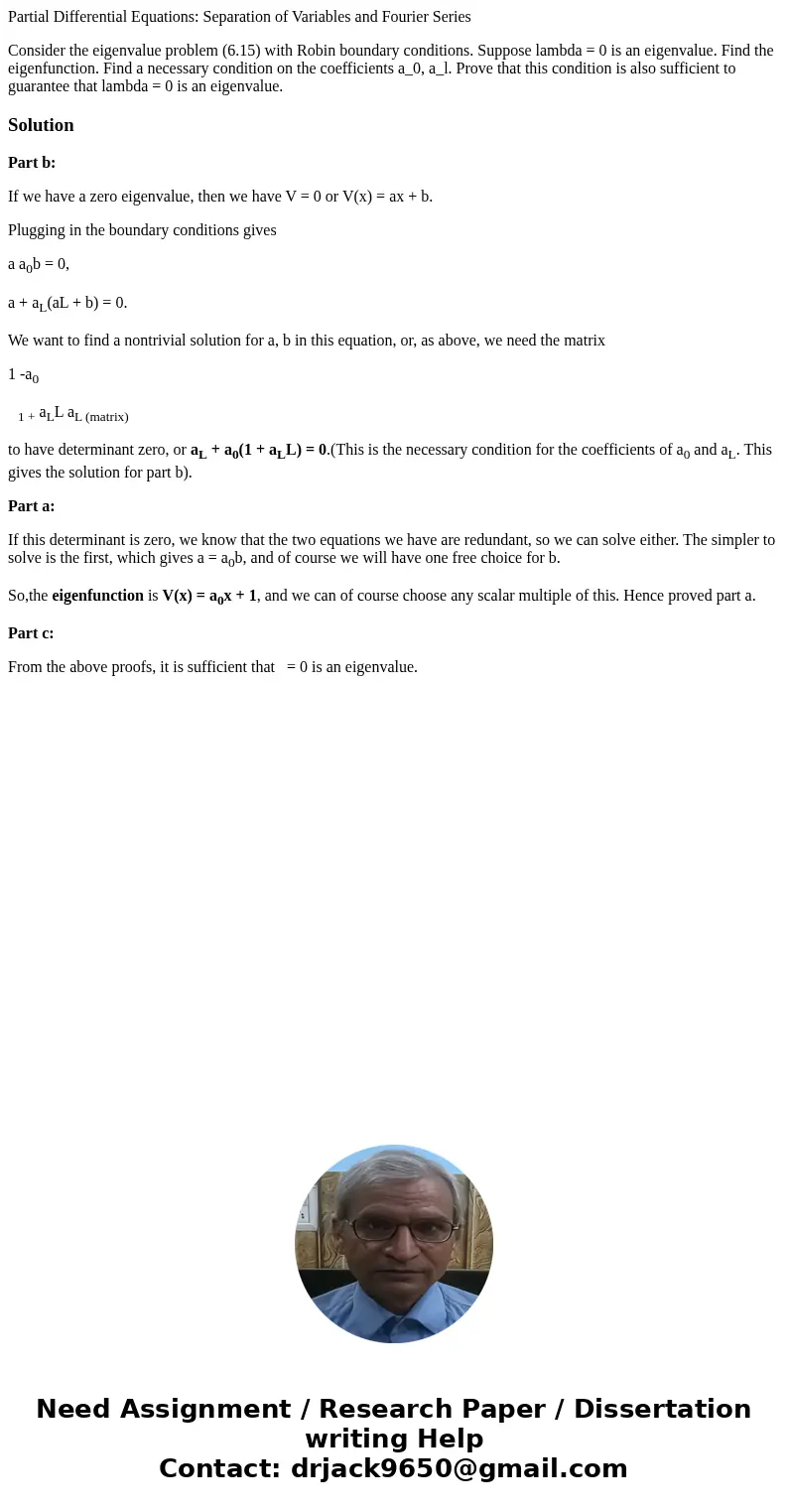Partial Differential Equations Separation of Variables and F
Partial Differential Equations: Separation of Variables and Fourier Series
Consider the eigenvalue problem (6.15) with Robin boundary conditions. Suppose lambda = 0 is an eigenvalue. Find the eigenfunction. Find a necessary condition on the coefficients a_0, a_l. Prove that this condition is also sufficient to guarantee that lambda = 0 is an eigenvalue.Solution
Part b:
If we have a zero eigenvalue, then we have V = 0 or V(x) = ax + b.
Plugging in the boundary conditions gives
a a0b = 0,
a + aL(aL + b) = 0.
We want to find a nontrivial solution for a, b in this equation, or, as above, we need the matrix
1 -a0
1 + aLL aL (matrix)
to have determinant zero, or aL + a0(1 + aLL) = 0.(This is the necessary condition for the coefficients of a0 and aL. This gives the solution for part b).
Part a:
If this determinant is zero, we know that the two equations we have are redundant, so we can solve either. The simpler to solve is the first, which gives a = a0b, and of course we will have one free choice for b.
So,the eigenfunction is V(x) = a0x + 1, and we can of course choose any scalar multiple of this. Hence proved part a.
Part c:
From the above proofs, it is sufficient that = 0 is an eigenvalue.

 Homework Sourse
Homework Sourse